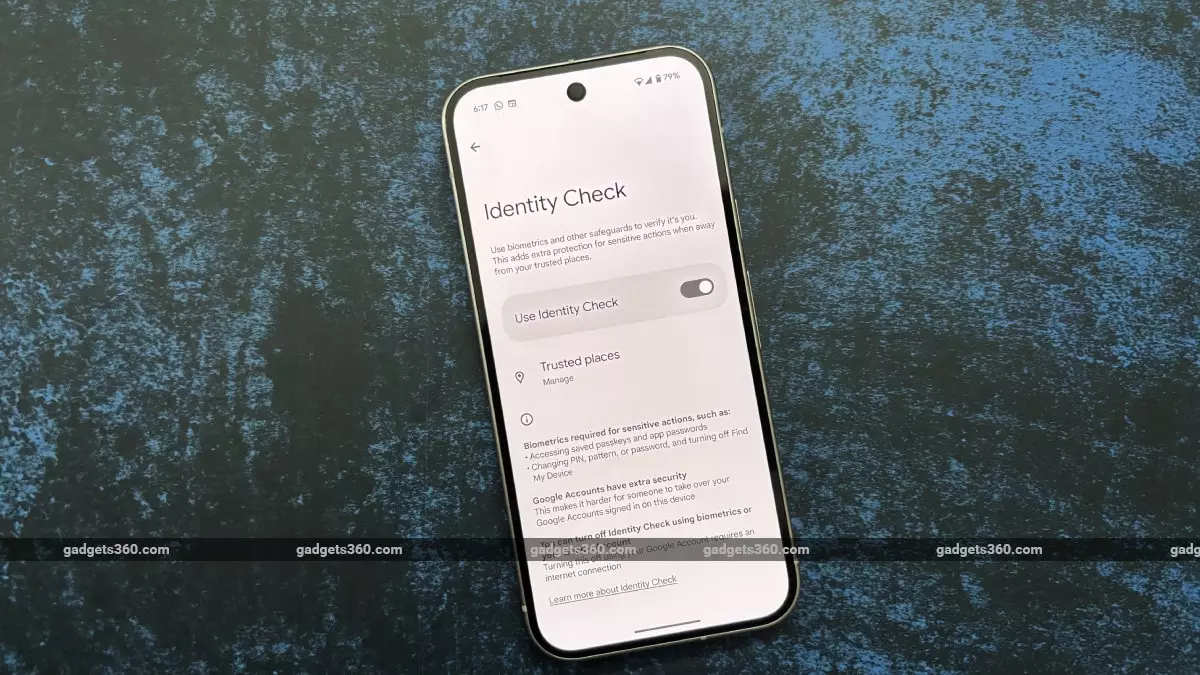In an era where cyber threats loom larger than ever, the debate around user data protection has never been more pressing. Google’s impending expansion of the Identity Check security feature is a timely response to this challenge. Set to roll out beyond Google Pixel and Samsung devices, this feature underscores a decisive shift in how we approach smartphone security. However, its introduction raises vital questions about the effectiveness of biometric security and how well it can truly safeguard our personal data.
The Mechanics of Identity Check
At its core, Identity Check is designed to keep user data safe, especially when phones fall into the wrong hands—a concern that is increasingly common in today’s fast-paced digital landscape. By requiring biometric authentication, such as fingerprints or facial recognition, before permitting alterations to sensitive settings, Google is attempting to offer peace of mind for users who worry about data breaches. After all, what could be more alarming than realizing sensitive information is just a thief’s thumbprint away?
Yet, despite the technical prowess behind this innovation, it is crucial to examine whether biometric systems provide an impenetrable defense against unauthorized access. After all, like any technology, they are not without vulnerabilities. Could someone possibly bypass these security measures? People might assume biometric locks are bulletproof, but practical tests reveal loopholes and fallibilities. A locking system is only as secure as its weakest link.
The Apple Comparison: Raising the Stakes
Interestingly, Google is not the first mover in this arena. Apple launched its own Stolen Device Protection feature earlier this year, which similarly enforces biometric locks for sensitive changes. This competitive push illuminates a critical narrative: security features are transforming into selling points rather than mere protective measures. The stark reality is that while both tech giants strive for enhanced safety, they also play the marketplace like a game of chess, maneuvering toward a more substantial market capture at the expense of honesty about vulnerabilities.
While Apple’s implementation has already expanded to all iPhone models running on iOS 17.3 or later, Android devices are set for a staggered rollout with Android 16. This inconsistency in accessibility raises important concerns about digital equity. Will all users, regardless of their smartphone brand, gain equal protection?
Biometric Security: A Double-Edged Sword
There is an alluring aspect of biometric security; it simplifies user interaction with devices. No more forgotten passwords or lengthy PINs—just a swift swipe or gaze. Yet, this convenience also invites complacency. When users grow overly reliant on biometric authentication, they may neglect broader security practices, such as regular password changes or cautious app permissions. Moreover, data breaches against biometric databases could result in irrevocable compromises—someone steals your password, you can reset it; steal your fingerprint, and your digital identity could be irretrievably marred.
The rollout of Identity Check cannot just be seen as an isolated technological enhancement; it must be contextualized within broader trends in personal and societal security rigors. The reliance on biometric systems obligates responsibility not just from tech companies, but also from users.
Managing Expectations
As Google prepares its Identity Check rollout, the anticipation builds for more empowered control over mobile safety. However, the introduction of this feature should not breed overconfidence. Tech companies must continue to educate users about the limitations and risks of relying solely on biometric systems. Security is a multifaceted endeavor, requiring a combination of vigilance, awareness, and proactive measures.
In wrapping up this exploration of Google’s Identity Check feature, it’s clear that while the capability to protect personal data is advancing, the conversation around responsible use and comprehensive safeguarding measures continues to be of paramount importance. Users must stay informed, strike a balance between convenience and security, and cultivate a mindset geared toward mindfulness in a world where each swipe could mean the difference between safety and vulnerability.


Leave a Reply